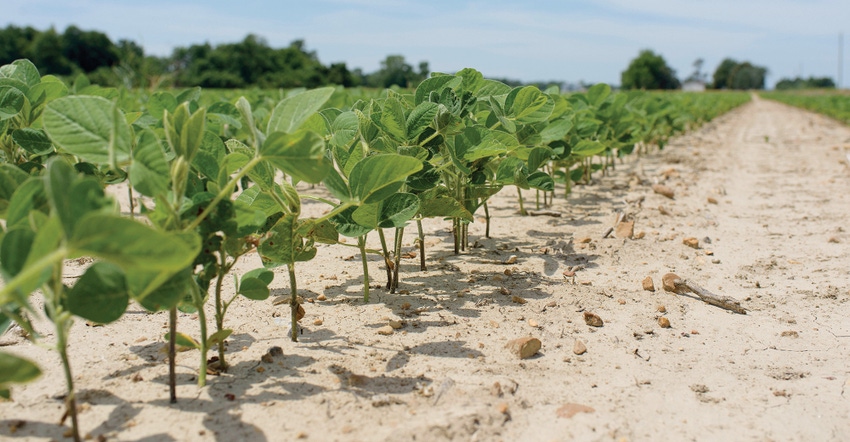
A well-attended May 31 Arkansas Plant Board Pesticide Committee hearing on Loyant damage to soybeans ended after several hours of discussion and questions. There have been a handful of drift complaints to the board regarding the new rice herbicide with other producers saying they are trying to work out damage issues with neighbors sans regulators.
“The committee asked lots of questions about what was going on and why the problems we’re seeing are happening,” says Jeremy Ross, Arkansas Extension soybean specialist. “Pretty much the final decision was just to send out a notice on application, to make sure to follow the label. The committee felt like there was very little time to do anything substantive — the calendar is against that.”
Another three weeks and the crops should be past the point of putting Loyant out.
There are aerial applicators who have already gone with a no-spray approach. During the hearing, it was reiterated that “many of them who’ve put it out have seen problems come up. Or, if they haven’t seen those problems personally, they’ve certainly heard from other pilots to be very cautious.”
The big question, of course, is what will happen to the beans that have been injured, says Ross. “Earlier, we told everyone to give it a few days to see if the plants bounce back. Well, most of the fields we were first alerted to were hit over seven days ago. Some of the beans look like they’ve turned around and grown upright. Others — and they may have been hit with Loyant and other herbicides — still look funny and may need to be replanted.
“Don’t spray into a situation where there’s a potential inversion and don’t spray when a vulnerable crop is downwind. Spray volume is supposed to be 10 gallons.”
Loyant has not had a smooth introduction in the state. The week of May 21, Ross “began getting calls and texts with pictures of soybeans showing symptomology of typical auxin damage. It blew up since and I continued to get calls from consultants or county (Extension) agents about the same symptomology every time.”
Ross walked some of the soybean fields and “most of the time we were able to find rice that had been sprayed with Loyant within close proximity. Soybeans are really sensitive to auxins and are more ‘showy’ when it affects them.”
As discussed during the hearing, “word has gotten out and some aerial applicators have decided not to spray it due to the issues we’ve seen. We have got to figure out how to use Loyant in our systems — it’s an excellent tool for rice production. But after what we’ve seen over the last week to 10 days, whether it can be used out of an airplane is an open question. We may just have to use it with ground rigs with the conditions we’ve seen recently.”
And those conditions “haven’t been conducive to any applications, much less a new product we’re trying to get used to. It was cold and then it’s gotten warm quickly with inversion layers. Loyant isn’t moving like dicamba — it isn’t a volatility issue. But the particles seem to be getting hung up in inversion layers early in the morning and late at night and then drifting.”
What about replanting?
“It’s kind of like the questions we got last year with dicamba injury on some early-planted beans. It’s hard to answer definitively because this is so new. None of us have experienced this kind of damage so early.
“In talking to some guys in Louisiana who saw this kind of damage earlier, their beans seem to be growing out of it. Their beans have straightened up and are now doing fine. … We’ve seen 2,4-D damage in the past and most of the time the beans will grow out of that symptomology and produce good yields.”
Ross would “rather have a crop planted a month ago with a bit of damage than replanting the field in early June. Our data shows the earlier you can get planted, the better the yield. So, at this point, my gut feeling is to just hold off on replanting.”
Ross believes the Delta landscape may be exacerbating the problem.
“I think there’s something to that. In the Prairie area and up into Mississippi County (in the northeast), the treelines aren’t there. The treelines are gone and it’s pretty open space. With high temperatures and high humidity, the inversion layers are developing in the early afternoon and continue to mid-morning.
“Well, that’s going to let ‘fines’ — fine droplets — get hung up in the inversion layers and it can move easily over the open spaces. More treelines would probably help block more of the issues.”
About the Author(s)
You May Also Like




